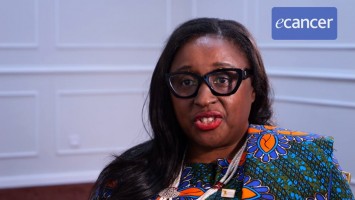EADO Congress 2015
Melanoma prevention: Do we need sunlight for vitamin D?
Prof Julia A Newton-Bishop - University of Leeds, Leeds, UK
On the one hand, sunlight is the environmental cause of melanoma; on the other hand, sunlight provides us with vitamin D. Now how do you square all of that when you need vitamin D, what should cancer doctors and cancer clinicians be telling patients?
They should be telling patients to protect their skin from excessive sun exposure after their diagnosis but without becoming short of vitamin D. Because most melanoma patients are pale skinned and therefore vulnerable to sunburn, in essence that means protecting their skin all the time but taking modest supplementation of vitamin D to make sure they don’t become deficient.
So, in a nutshell, sun is never good for you?
No, sun is often good for you, it makes you feel better and it allows people to make vitamin D. But the problem is that those people who are at increased risk of melanoma are pale skinned so it doesn’t take a whole lot of sun to make them burn which increases their risk of melanoma and it’s very difficult, in my view it’s almost impossible, for them to work out just how much sun to have safely sufficient to produce vitamin D. That applies to their families as well because their families share the same skin type and environment so that’s why I make that advice.
If you’re giving advice to patients should you concentrate your advice or emphasise your advice on those patients with fair skin?
Yes, but all melanoma patients, or the majority of them have pale skin so I’m giving advice for melanoma patients in general and their families.
And if you give advice to the general public, what should that advice be?
The Scientific Advisory Committee on Nutrition, which is a UK governmental agency, has just issued a draft guideline which suggests that all people living in Britain, and one supposes the same advice would apply to much of Northern Europe, should be taking 400 international units per day of vitamin D3 because of the difficulties of making quite enough vitamin D in our less sunny part of Europe.
You mention, then, supplements but you can get vitamin D from the diet. Now, how do you balance the trade-off between getting it from food which surely is a more natural way to get your vitamins?
The trouble is the only good sources of vitamin D are fatty fish, there’s some in eggs; for vegetarians it’s very difficult. Mushrooms. It’s really very difficult to get sufficient vitamin D from your diet. For example, salmon has vitamin D in it but only wild salmon because they get it from the plankton. It’s difficult and that’s why the advice is to supplement.
So supplements, you said 400 international units, what if you go above that? Should you take higher levels of supplementation?
No, I don’t think you should. The NICE clinical melanoma guideline in Britain suggested that physicians should measure vitamin D levels in melanoma patients because we have theoretical concerns that high levels of vitamin D might actually be harmful. We want a normal range and the SACN’s guidelines suggest that for most people that’s about 400 international units which is a modest regular dose.
There is some controversy about this because expressions like vitamin D deficiency and vitamin D insufficiency exist, that’s all rather confusing, isn’t it?
It is very confusing but again the SACN bases their recommendation about 400 international units on a very conservative estimate. That committee says that a winter level of 25 nmol/L is what we’re aiming to achieve, that means 45 in the summer because of variation with UV exposure and that 400 international units should produce that result. So it’s a common sense moderate suggestion.
Now, let’s look at the general population. What should people be doing about sun protection in general then? What measures should they take?
If you’re vulnerable to sunburn, and in Northern Europe that’s quite a lot of people, then you should protect yourself carefully so that you don’t get burnt, remembering that the sort of sun exposure that causes melanoma is recreational. So it’s not pottering about in the garden without getting burnt, it’s suddenly whipping your clothes off in somewhere like Marseilles in the sun and getting burnt. It’s that holiday exposure that’s dangerous and that’s what we’ve got to control, really.
So use sunscreen, what about hats and the like?
Sunscreen is very important, sunscreen that protects you from UV-A as well as UV-B, so factor 30 minimum, I would use 50 if I was in a very hot place, and covering up with clothing, yes. I hesitate to talk about hats, I think they’re very important but one has to be practicable. Most people are really turned off by advice to cover up, long sleeves and floppy hat, it’s really not conducive to compliance. So one has to be reasonable. Care is important but we have to recognise that people want to bear their skin. So careful application of sunscreen, not staying out there too long, false tan, these are all very sensible things.
In a nutshell, what would you say to cancer doctors about this whole subject of vitamin D, sunlight and how to avoid getting melanoma?
Avoid sunburn; avoid vitamin D deficiency by modest supplementation.








